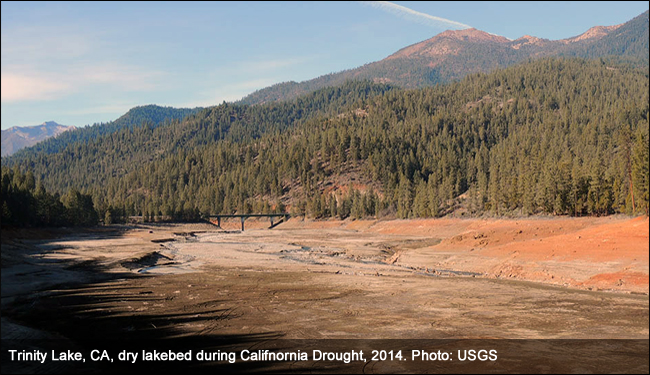
What is Hydroclimate? Hydroclimate is the scientific field that brings together hydrology and climate, including the impacts that water and its processes have on Earth’s climate, and the impacts of climate patterns and change on the global hydrological (or water) cycle. From small to large scales, the hydrological cycle plays a vital role in Earth’s ecosystem as well as the weather that we experience. The hydrological cycle involves processes where liquid water evaporates into water vapor, condenses to form clouds, and precipitates back to Earth in the form of rain and snow. Also, the hydrological cycle involves factors such as water storage through snow, ground, and vegetation. Ocean currents and large-scale dynamics transport energy across the planet and regulate global climate patterns. Hydroclimate phenomena such as drought, flooding, and precipitation can have societal impacts such as crop damage and loss of life.
Learn more about the Hydrologic Cycle.
Increasing global temperatures can disrupt the hydrological cycle since its processes are strongly dependent on temperature. Higher temperatures mean that the atmosphere can hold larger amounts of water, potentially leading to more intense precipitation events. Rising temperatures may cause some regions to become more arid or experience more frequent droughts. Greater evaporation can lead to harder, less absorbent soils, which can in turn mean that less water is absorbed by vegetation and thus to more runoff during precipitation events. Changes in sea surface temperatures and to the pace of ocean circulation are affecting regional and global weather patterns.